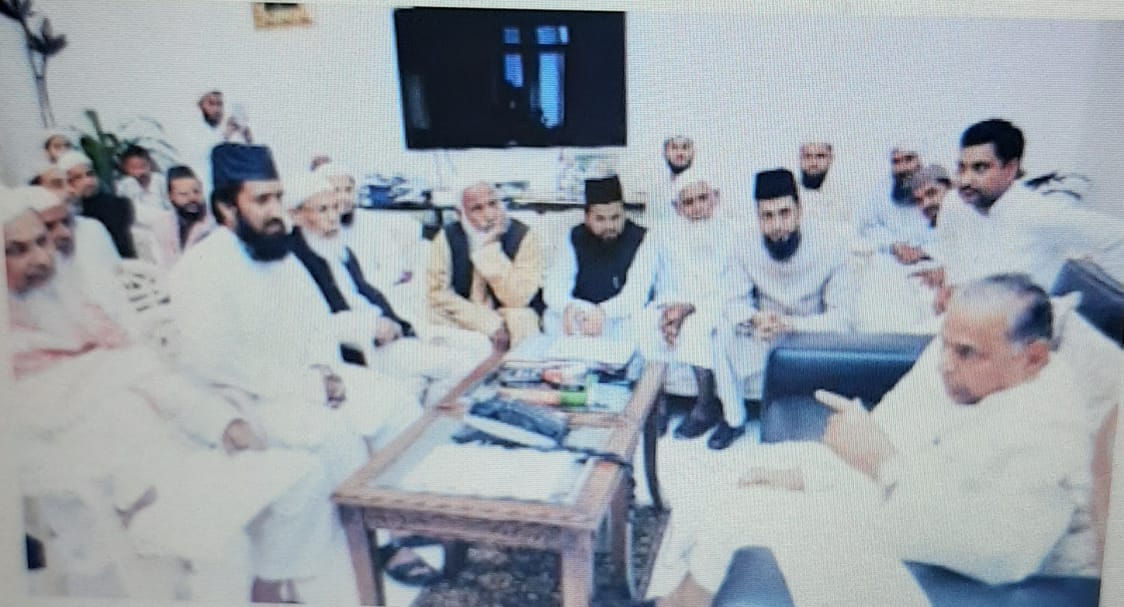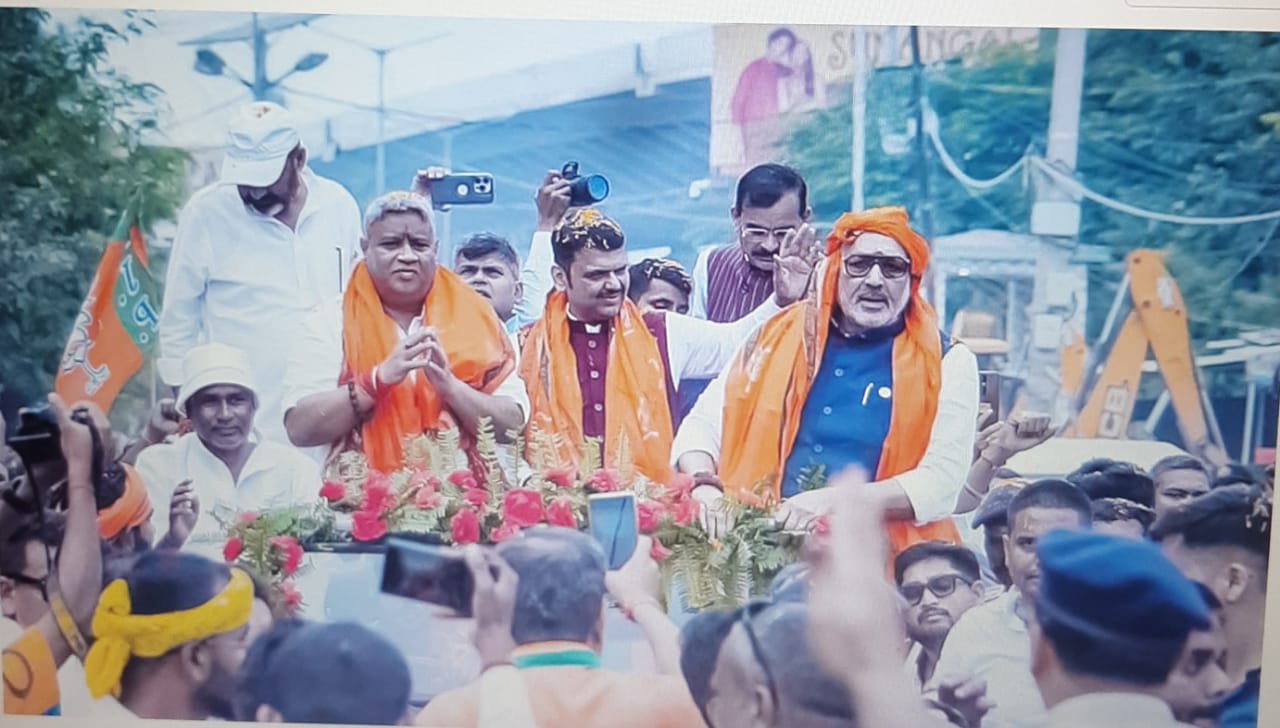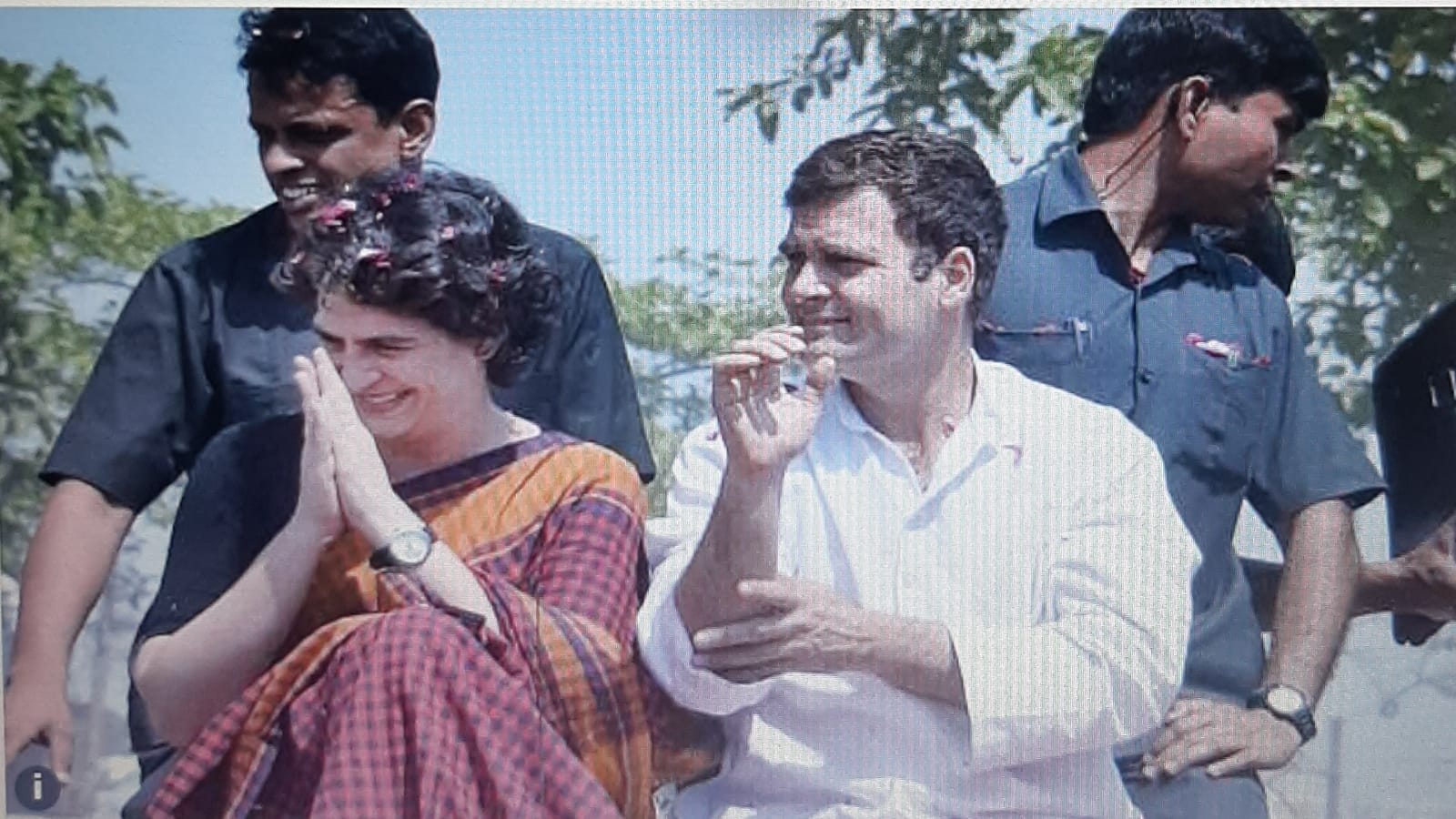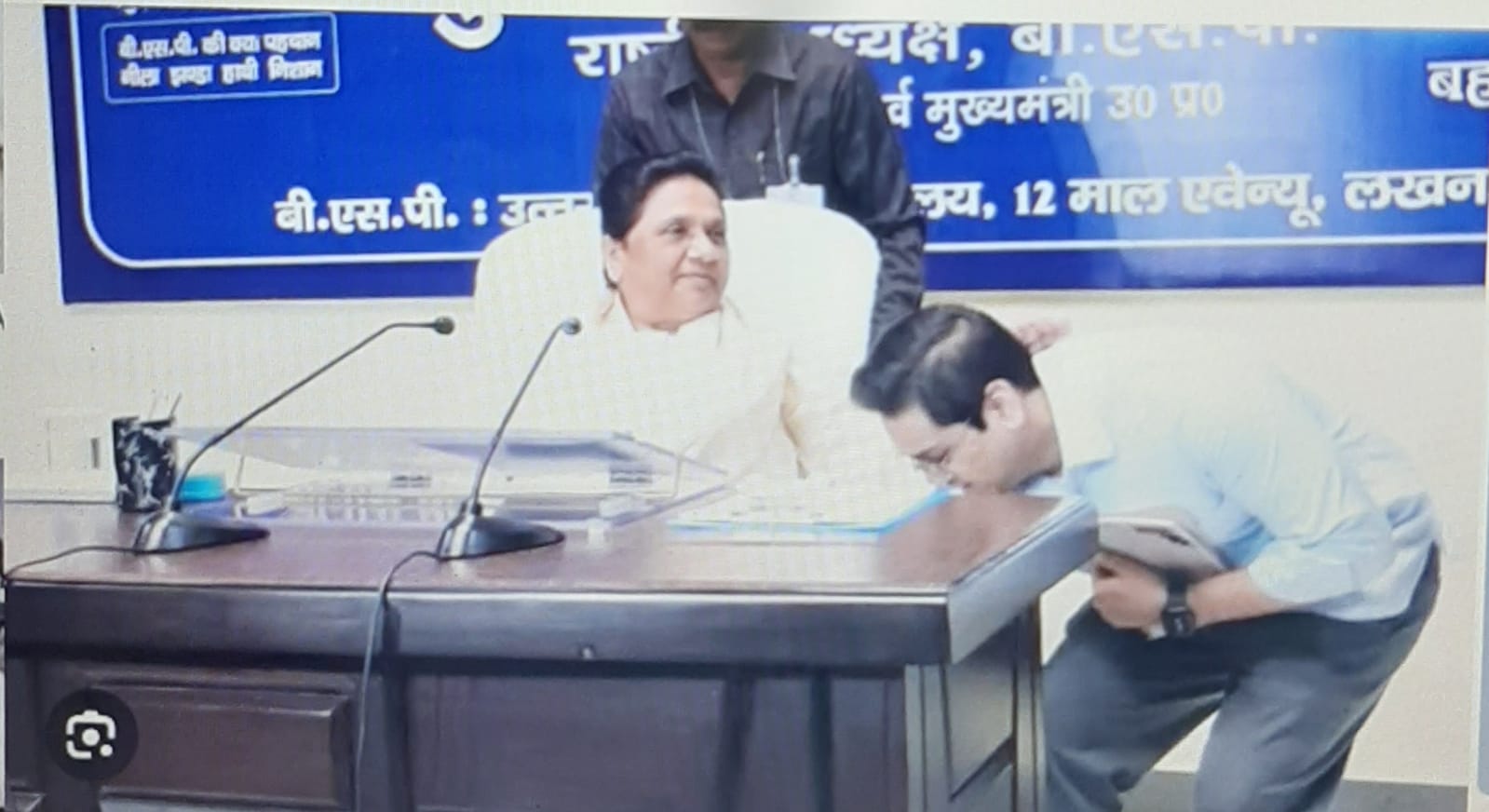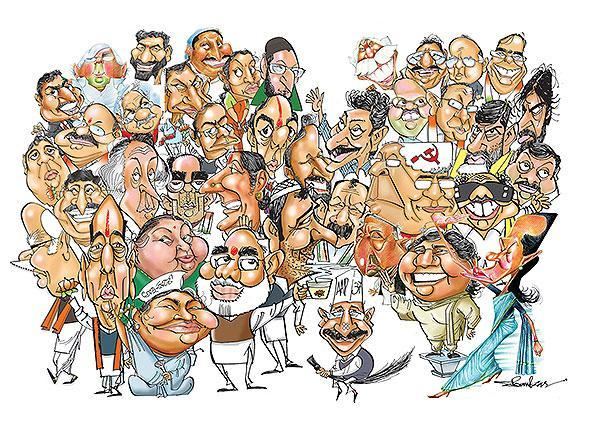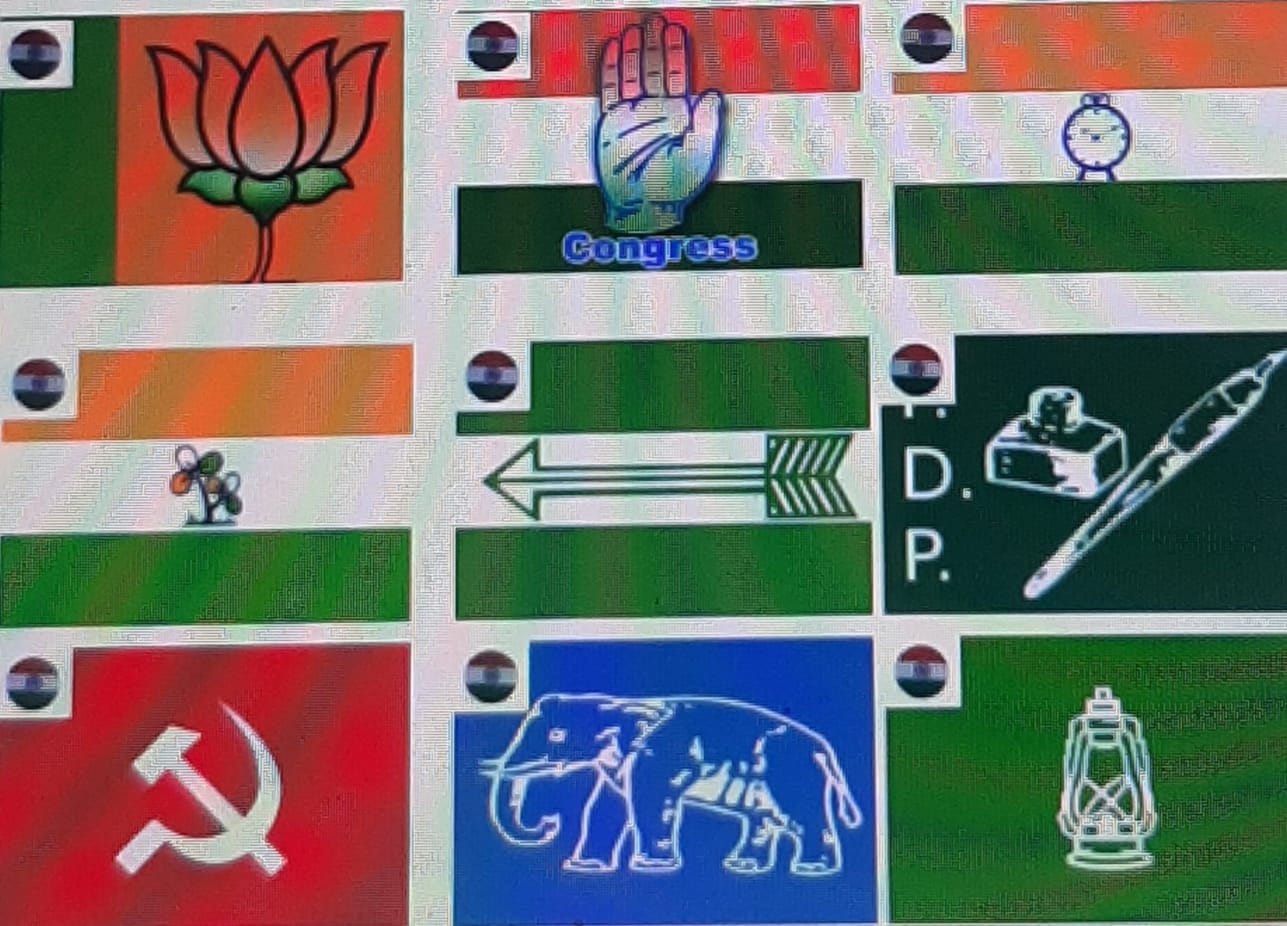
Good governance is the birth-right of all citizens in independent and democratic India must become the key sentence in party ideology. Strong political commitment to local governments should become the defining feature of the party. This would also create the environment where party gets strengthened from below rather than the top, writes former IAS officer Sunil Kumar
Decline of Congress party and its floundering attempts to reinvent itself coupled with the failure of regional parties to spread beyond their own States and acquire national party status spell despair for those rooting for vibrant democracy in the country. Even national parties like the CPI(M) and CPI, AAP are now confined to one or two states. In this scenario, talks of ‘Congress-Mukt Bharat’ by the ruling Bhartiya Janata Party (BJP) further add to the gloom. As pointed out by Suhas Palshikar[i], it seems the leaders of Congress party themselves do not believe that talking of ‘nyay’ or justice, redistribution of wealth, social inclusion and a democratic state would infuse fresh lease of life into a moribund party cadre.
This raises the question as to how and why political parties, big and small, find themselves in such dire straits today. After the passing away of a generation of politicians, whether in the Congress or the Opposition by mid-70s, who would not shy away from hitting the streets and protesting against ‘anti-people’ policies of governments, we find that post 1980s the number and nature of public protests led by political parties have reduced and changed considerably. Processions, peaceful dharnas (sit-in) and strikes are no longer believed to be effective tools for mass mobilisation or for registering protest. In a sign of changing times, even the judiciary has stepped in and decreed that citizens cannot be put to inconvenience[ii]. Governments have used it to telling effect. Consequently, in the digital age, even protests have become ‘virtual’ – confined to social media. Even there it is not safe as Government can use its powers under the IT Act – 79 (3)(b) to get such content removed bypassing the safeguards provided under Section 69A[iii]. In the rare instance where any protest becomes ‘real’, the State can dig up roads and put all types of barriers to prevent protestors from marching ahead (remember the Farm protests) and use bulldozers to reduce house of protestors to rubble without adhering to rule of law. Thus, the ability as well as willingness of political parties to mobilise their cadre and people to join public protests on range of issues from rising inflation, unemployment to corruption has been severely eroded.
Further, the passage of the Anti-Defection Bill in mid 1980s has spelt the ‘end of internal democracy’ in most political parties. By mid-80s we find that almost all political parties (barring the Communist Parties) had adopted the ‘high command’ and ‘supreme leader’ culture (remember ‘India is Indira and Indira is India’ jibe by the then INC President D.K. Barooah in 1976) once represented by the Congress. The situation is no different today. Even the BJP is said to have become totally ‘congressified’ in the Modi-Shah era. Almost all regional parties are dependent on one or two charismatic leaders. Cadre of self-less workers has vanished in all political parties as money[iv] and muscle power gained prominence after mid-seventies. It has also been observed that political parties have become the most effective and safe conduit for laundering black money in India[v].
Consequently, today most political parties are almost single-mindedly focused upon remaining in power or seizing power. Rewards are disproportionately huge for the ruling party as well as politicians belonging to ruling party. It has long ceased to surprise when politicians ‘switch sides’ ostensibly because the realization dawned on them that ‘development’ of their constituency and meeting the aspirations of their voters is possible only if they are with the ruling dispensation. This is a far cry from those days when work of most opposition party leaders would get done far more easily than those of the ruling party. Likewise, flow of funds to opposition parties through industry and individuals has almost dried up[vi]. Politics in India has truly come a long way. Basic civil courtesies among leaders of different parties are far less observed today. ‘Decimating’ the opposition has become an acceptable goal.
In this scenario, what are the options before different political parties? How can they pose a serious challenge to the well-oiled election winning machinery of the ruling party? This is something with which even the grand old party of India (140 year old Indian National Congress) seems to be grappling with for at least over a decade now. Congress party is reportedly focusing upon strengthening the party from District level up. Newspaper reports[vii] suggest that the party has invited applications for District Party Presidents. A panel of one AICC observer and four leaders drawn from State Congress are expected to hold workshops, seek inputs and interact with all candidates for District Congress President before forwarding their recommendations. The Congress party also intends to set up a political affairs committee in each district with all important district level leaders as members so as to avoid factionalism in the party.
We have seen how political strategists like Prashant Kishor of Citizens for Accountable Governance (CAG) (now also the founder of Jan Suraaj Party in Bihar) have tried their hands in drawing up electoral strategies for different political parties (primarily aimed at winning Vidhan Sabha and Lok Sabha elections) with mixed results. Now as the leader of Jan Suraaj Party he is trying to practise himself what he had been preaching earlier. After launching the party, it set up candidates in the bypolls held recently. All of them lost. To cap it, a large public rally organized in Gandhi Maidan, Patna recently also proved to be a ‘flop show’.
Let us see what are the learnings. One, if politics is about establishing an emotional connect with the electorate, then there is nothing to beat ‘padyatra’ (walking on foot) in India. Gandhi used it to good effect (remember Dandi Yatra in 1930 to break the British Salt Law). Vinoba Bhave and JP also used it to good effect in independent India during the course of their Bhoodan and Sarvodaya movement. Then one recalls the Bharat Yatra undertaken by Chandrasekhar in 1983 and the latest Bharat Jodo Yatra of Rahul Gandhi. PK has also been undertaking ‘padyatra’ across Bihar over the last two years. Earlier, Digvijay Singh undertook Narmada Praikrama padyatra in Madhya Pradesh in 2018 which kept him politically relevant. Late YS Reddy had undertaken padyatra in undivided Andhra Pradesh which enabled him to unseat the then firmly ensconced Chandrababu Naidu as Chief Minister of Andhra Pradesh (undivided) and establish himself as a local satrap in Congress politics before his untimely death in an air accident.
However, padyatra alone is not enough. It generates a swell of positive public opinion and makes the leader truly ‘known’ to the rural populace – men and women working in the fields, belonging to weaker sections who may not be literate and may not have access to smartphones/TV/newspapers but are voters nevertheless. Ordinary Indians begin to identify the leader as one of their own, someone who has sacrificed the comfort of travel in air-conditioned cars to be one with them. This connection is not possible in any other yatra. Still it is insufficient to guarantee electoral success if it remains a ‘one-off event’ of one leader.
Two, in my view what is required is padyatras on a smaller scale by all other party leaders. These could be organized regularly by the local leaders in their own Gram Panchayat, Block and district. It would galvanize the booth level workers and would keep the party leaders fully in touch with ground realities. Then their dependence on political consultants to identify issues relevant at the local level, gauge the mood of the elctorate etc. would vanish. It would also give them ideas regarding public issues to be taken up politically.
Three, giving party tickets to retired bureaucrats and defence officials or inducting them in the party high command serves to demotivate the grassroot workers. The large number of party tickets given by all major political parties to professional ‘party hoppers’ before general elections is an unwelcome trend. However, political parties succumb to the temptation based on projected ‘winnability’ factor of such candidates. Since the stakes in the power game are so high, sometimes it even clouds the political judgment of seasoned leaders. Political lineage, ability to spend money in elections apart from caste considerations become overwhelming factors in selection of party candidates.
Four, it must be recognized that politics is a full-time occupation. It cannot be done part-time. There have been very few ex-bureaucrats who have become successful politicians after retirement. They may become MP, MLA or even Minister but their connect with the constituency and the constituents always remains a question mark. Blame it on their assured pension and life-long training of not meeting people after appointed hours without an appointment!
So if grassroot workers are to be nurtured and developed into leaders and they do not have the ‘money-power’ (given that almost 95 percent of current lot of MPs are self-declared crorepatis), how can any political party even hope to become a serious contender for power? True, this is a very valid question. An honest reply suggests that they stand virtually no chance to succeed in the present environment if they do not give tickets to persons with strong political lineage and enough resources to spend, overtly and covertly, several times the stipulated election expense ceiling. Voters would not even get to know who their candidate is if there are no expensive ‘road shows’, hundreds of expensive hoardings, ‘paid news’ in electronic and print media etc. Party workers would not even stir out of their houses if they are not provided a vehicle and pocket expenses of at least Rs.1000 per day. There is also high probability that several candidates would quietly withdraw from the contest after receiving money from the main parties once they realize that their chance of winning is negligible. A large number of candidates from smaller parties fall in this category. So without changing the ‘rules of the game’ chances of a new political party emerging on the scene and succeeding is very remote (notwithstanding the limited success enjoyed by Aam Aadmi Party).
A successful strategy would play along these lines. First, before plunging into electoral battle, spend at least five years in building up the party. This time should be spent in undertaking short ‘padyatras’ at Gram Panchayat and Block levels. After a year of relentless hitting the streets, the party would be able to identify potential leaders at GP level and would have a better understanding of the issues that are playing in the minds of the people. This would set the stage for undertaking extensive padyatras in the district and then the state.
Second, there should initially be tens and eventually hundreds of leaders who regularly undertake this padyatra. Temptation to use the motorcycle or even bicycle would be huge. But it must be resisted. Otherwise, chances of succeeding would recede in the inverse proportion of number of vehicles used!
Third, make a conscious effort to involve youth – boys and girls – in this exercise. People look at politicians with suspicion. Poitics is a dirty game. This mindset has to change. This itself is a herculean task.
Fourth, the challenge to meet the sundry expenses of full-time party workers would also be there. Workers should be encoraged to refrain from doing ‘dalali’ in police thanas and tehsils or running after ‘petty contracts’ as is the wont now.
Fifth, make a beginning by undertaking projects of change which require just community efforts and not large sums of money. Train the party workers to participate effectively in the meetings of Ward Sabha/Gram Sabha in rural areas. In urban areas, they should demand organization of meetings of Area Sabha (for 2 to 5 polling booths where every voter is a member just as in Gram Sabha). Effective participation in Gram Sabha / Area Sabha would help develop the leadership qualities of party workers. Organizing and leading successful community driven projects would give them confidence and enhance their credibility. These would help establish the credentials of both the leaders and the party.
Sixth, plunge into the electoral battle first at Local Government level. Despite local government elections being very tough, it is also the one where chances of success would be higher provided the candidate has worked hard and made a mark in the meetings of the Gram Sabha. The slogan ‘Gram Sabha se Sansad tak’ should be taken literally. So for the political party, the third tier of Government literally becomes the first tier. Party would draw its strength from the grassroots. Effective participation in local government institutions such as Gram Sabha, Panchayat Committees, making of Gram Panchayat Development Plans would transform ordinary workers into leaders and that should determine their future progress within the party. Imagine if all party workers were asked to raise issues and ask questions in Gram Sabha then how vibrant would democracy become! So performance of party workers in Gram Sabha and Gram Panchayat would determine whether they get tickets to contest Block Panchayat and District Panchayat elections or not. Same would be the case in urban areas. The party would focus first on smaller Nagar Panchayats and then Municipalities and Municipal Corporations. In a large Municipal Corporation, a ward could also be the size of a small Block.
Seventh, commitment to party ideology and integrity must be non-negotiable ideals. Party through its workers and elected representatives in local governments must break the nexus between politics and corruption and establish strong links between politics and governance.
Eighth, focus on small donations to be collected from residents in every Gram Panchayat and Nagar Panchayat rather than centralized collection of funds especially from large donors as is largely the case now. A report prepared by ADR[viii] reveals that most of the donations received by national political parties (except BSP) in 2023-24 are of over Rs.1 crore and given by large corporate houses or individuals. When a party accepts large donations then chances of an unholy nexus developing and quid pro quo coming into play is very high. Same is not likely to be the case if small donations from individuals are accepted to keep the party going. If all party workers and leaders are given the responsibility to collect funds during their padyatras or from door to door then it would also make them humble and accountable to the voter including the poor.
Ninth, effective use of digital technology could play a very important part in establishing sound two way communication between party workers and leaders on the one hand and the party and citizens on the other. Workers and leaders would need to be specially trained. Help and support of professionals in advising workers and leaders to find solutions to vexed problems in their area would develop a ‘can do’ spirit rather than dependency syndrome. The moment people begin to think that they are capable of finding solutions and sorting out their lives, politics would undergo a tectonic shift in the country. The ‘Maai-Baap’ culture promoted by all major political parties would need to be given the short shrift.
After successful participation and working in rural and urban local governments, the party would be in a position to contest Vidhan Sabha and eventually Lok Sabha elections. This would be changing the ‘rules of the game’. Here the party would be choosing the battle and the opponent and playing against them on its own turf. This should provide home ground advantage to the party.
‘Good governance is the birth-right of all citizens in independent and democratic India’ must become the key sentence in party ideology. Strong political commitment to local governments should become the defining feature of the party. This would also create the environment where party gets strengthened from below rather than the top.
At every level, party leaders would have the freedom to take initiatives and commence movements, organize public protests if the voice of the people is not being heard. Public support should become their strength rather than patronage by district, state or national leaders.
In my view, this strategy could be successful and mark the commencement of ‘new politics’ in India. It is time leaders and political parties realize that citizens have right to good quality of life, safe, clean and secure environment (wherein they are assured of good quality of civic services). It is difficult to ensure this through a ‘top-down’ method of doing politics. Party leaders and workers would need to seize the initiative and begin to think and act for themselves within the party framework. Sooner ‘high command’ culture and centralization of power (both within the party as well as government) is discarded, the better it would portend for future of democracy in the country. Only when political parties make a clean break from the way politics has played out in the last five decades, would they be able to establish their credibility with the voters. Belief and patience hold the key for new politics. There are no short-cuts to success in politics.
(Sunil Kumar is a Visiting Faculty in Gokhale Institute of Politics and Economics and a member of Pune International Centre. He is also a former civil servant. Views expressed as personal.)
[i] Dead ends & the road ahead; Op-ed; The Indian Express, Friday, April 18, 2025, Delhi edition
[ii] The issue has been examined in great detail in a Report prepared by Part 3 Foundation captioned ‘License to Protest: Examining the Role of Constitutional Courts in Upholding the Right to Protest’; Part III, Action Research and Resource Centre; September 2024
[iii] This issue is currently the subject matter of a pending litigation in Karnataka and Delhi High Courts.
[iv] “India’s 16th general elections, billed as the most expensive elections ever, are witnessing an unprecedented flow of black money into country’s electoral process. Analysts claim that a mammoth 400 billion rupees, roughly 0.35 percent of India’s GDP, has been pumped into the democratic process.” Black Money Infiltrates Indian Elections: Niranjan Sahoo; Published on April 24, 2014; https://www.orfonline.org/research/black-money-infiltrates-indian-elections
[v] “The political sphere is both a source and sink for black money…” Black Money in Politics: V Bhaskar; Economic & Political Weekly, November 4, 2017 vol LIL No 44
[vi]BJP got more than 88% of donations received by national parties in 2023-24: report: https://www.thehindu.com/news/national/bjp-tops-list-of-national-parties-with-over-2243-crore-in-donations-in-fy-2023-24-adr/article69422744.ece
[vii] Today in Politics: Congress revival plan; Sukhbir Badal back at Akali Dal helm; By Express News Service, April13, 2025; https://indianexpress.com/article/political-pulse/today-in-politics-congress-revival-plan-sukhbir-badal-akali-dal-9941401/
[viii] Analysis of Donations Received by National Political Parties FY 2023-24 ; By ADR and released on 7th April, 2025; https://adrindia.org/content/donation-report


